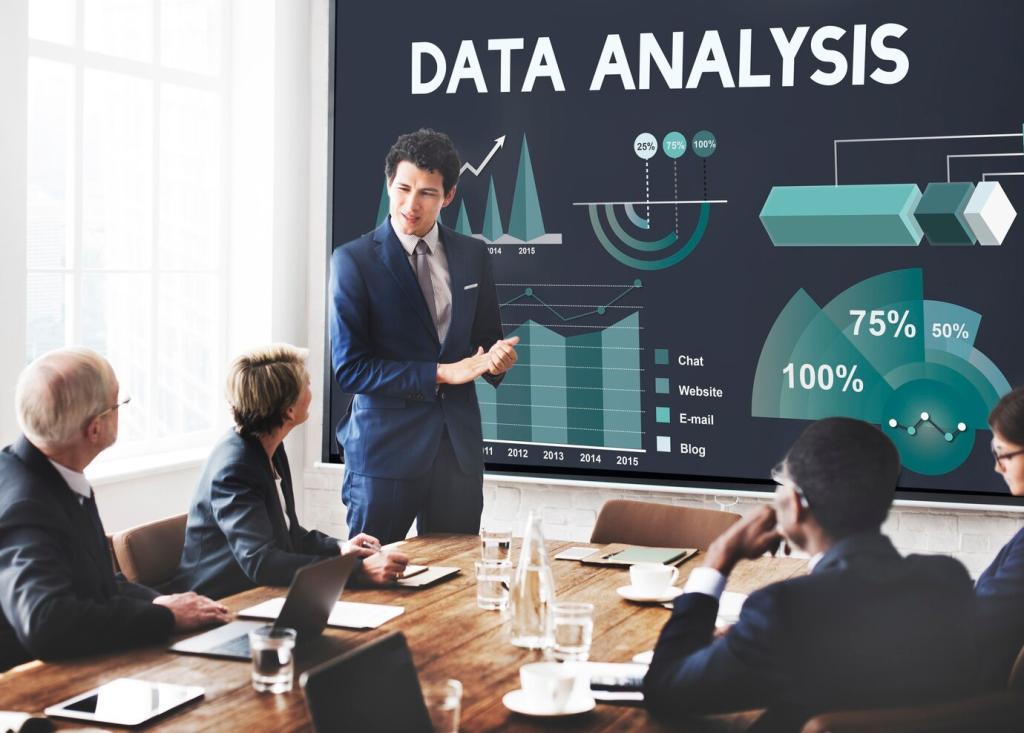Design Principles for Executive Dashboards
Lead with a small set of outcome metrics that reflect strategic goals, then provide supporting diagnostics. Reserve space for targets and variance. When leaders see direction first, they navigate details without losing context or urgency.
Design Principles for Executive Dashboards
Use preattentive attributes intentionally: color for status, position for comparison, and size sparingly. Prefer line charts for trends, bars for ranking, and tables for precise values. Reduce clutter ruthlessly to speed comprehension and dialogue.







